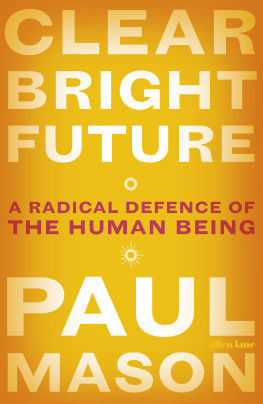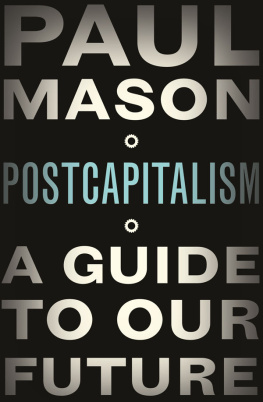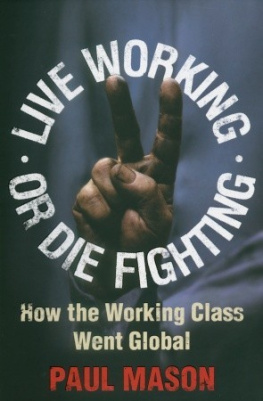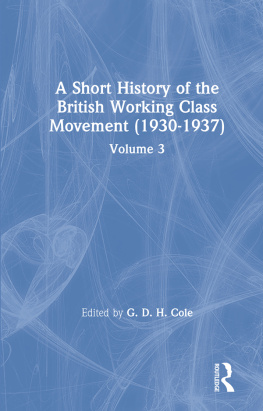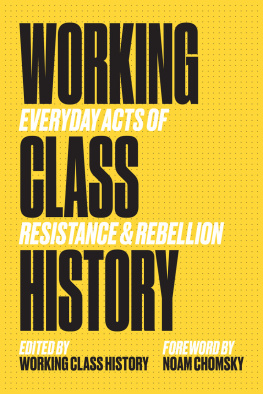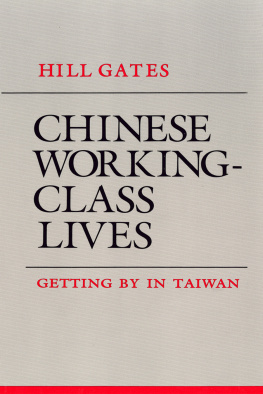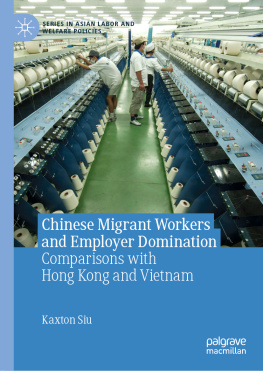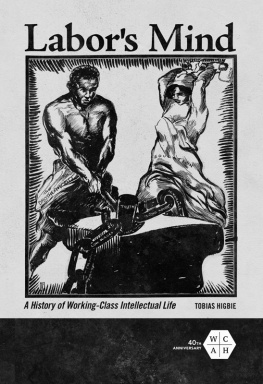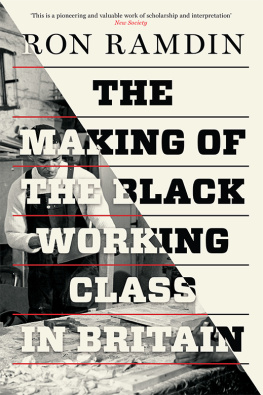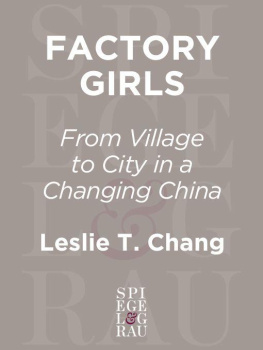
PAUL MASON
Live Working or Die Fighting
How the Working Class Went Global
This eBook is copyright material and must not be copied, reproduced, transferred, distributed, leased, licensed or publicly performed or used in any way except as specifically permitted in writing by the publishers, as allowed under the terms and conditions under which it was purchased or as strictly permitted by applicable copyright law. Any unauthorised distribution or use of this text may be a direct infringement of the authors and publishers rights and those responsible may be liable in law accordingly.
Version 1.0
Epub ISBN 9781446444160
www.randomhouse.co.uk
Published by Vintage 2008
2 4 6 8 10 9 7 5 3 1
Copyright Paul Mason, 2007
Paul Mason has asserted his right under the Copyright, Designs and Patents Act 1988 to be identified as the author of this work
This book is sold subject to the condition that it shall not, by way of trade or otherwise, be lent, resold, hired out, or otherwise circulated without the publishers prior consent in any form of binding or cover other than that in which it is published and without a similar condition, including this condition, being imposed on the subsequent purchaser
First published in Great Britain in 2007 by Harvill Secker
Vintage
Random House, 20 Vauxhall Bridge Road,
London SW1V 2SA
www.vintage-books.co.uk
Addresses for companies within The Random House Group Limited can be found at:
www.randomhouse.co.uk/offices.htm
The Random House Group Limited Reg. No. 954009
A CIP catalogue record for this book is available from the British Library
ISBN 9780099492887
Contents
For
John Mason (19271986)
About the Author
Paul Mason was born in 1960 in Leigh, Greater Manchester. He is BBC Newsnights business and industry correspondent. He won the 2003 Wincott Award for business journalism and was named Workworld Broadcast Journalist of the year in 2004. He lives in London.
Introduction
A man is scrambling in the dark across the pits and trenches of a massive building site. He is a foreman on the Liverpool docks, a man reputed for toughness and clean living. It is a warm night in the summer of 1904. The next day, on this spot the citys business elite will watch the King lay the foundation stone of the new Anglican cathedral; history will record the pomp of the ceremony in deferential detail. But it will not record what happens tonight.
Guided by a worker from the site, the docker digs a hole and buries a tin time capsule just below where the foundation stone will be laid. It contains articles from obscure labour newspapers and a message written in the flowery script and language of the self-taught working man. It says:
To the Finders, Hail! We the wage slaves employed on the erection of this cathedral, to be dedicated to the worship of the unemployed Jewish carpenter, hail ye! Within a stones throw from here, human beings are housed in slums not fit for swine. This message, written on trust-produced paper with trust-produced ink, is to tell ye how we today are at the mercy of trusts
Trusts were then what global corporations are today: powerful companies with a finger in every pie, held responsible for all the poverty in the world by some, all the progress in the world by others. Slums we still have one billion people live in them and though they are more than a stones throw from the rich cities of Europe and America, thanks to blogs, television and mobile phones the contrast between squalor and wealth is just as obvious to us as it was then.
Then, as now, there was an anti-corporate movement, and it was global. Its agitators spread their message on the street corners of slum districts, in the steerage cabins of migrant ships. It boycotted unethical goods, got its head broken on demonstrations and lived an alternative lifestyle that shocked mainstream society. This was the labour movement in the years before fists replaced flowers as its main symbols. Its true history has been buried as deep as that Liverpool dockers time capsule; its narratives, heroes and epics have been lost or, worse, simplified beyond meaning.
That history needs to be rediscovered because two sets of people stand in dire need of knowing more about it: first, the activists who have flooded the streets in Seattle, Genoa and beyond to protest against globalisation; second, the workers in the new factories, mines and waterfronts created by globalisation in the developing world, whose attempts to build a labour movement are at an early stage. They need to know what happened to the original labour movement during its long upward sweep not in order to relive it or piously to learn lessons from it. They need to know, quite simply, that what they are doing has been done before, where it can lead and what patterns of revolt, reaction and reform look like when you view them over decades. Above all they need to know that the movement was once a vital force: a counterculture in which people lived their lives and the main source of education for men and women condemned to live short, bleak lives and dream of impossible futures.
I have written this book to tell that story. There is no attempt to be comprehensive; I have just picked out some of the major events that happened during the great advance of the first hundred years, followed by the crisis and catastrophe of the inter-war period.
Because the first 150 years of industrial capitalism took place in countries that were mainly white and produced trade unions that were largely male, this is a story mainly about white, male workers in Europe, America and the Far East. Because it relies on memoirs, oral histories and the work of academics who themselves rely on these sources, I have concentrated on countries where such sources are accessible and trustworthy. I have not given any more than a rough sketch of the situation in mainstream politics in each chapter; if you want to know more about Louis-Napoleon, Franklin Delano Roosevelt or Giovanni Giolitti, just type them into Google and press Enter.
For a long time a book like this seemed to me unnecessary. When there were strong labour movements in Europe, America and the Pacific based in stable communities with an oral tradition, everybody knew the basic history. The workers I grew up with in an English coal and cotton town seemed to have been as George Orwell wrote born knowing what I had learned, out of books and slowly. Nobody needed a book that explained the basics then. And in any case, all the best stories had been told, I thought.
I was wrong. Leigh, the town where I grew up, was not so different in the 1960s from how it was when my grandfather went down the pit in 1913: it was a world of white manual workers, devout Sunday marchers for Catholicism and Methodism, brass bands, rugby and the annual Miners Gala. It is totally different now: twenty years of globalisation have shorn away most of what was permanent and certain. The miners union was destroyed, manufacturing has moved to China, and if you look for the union activists now you will find them mainly in education and local government. The labour market in which workers from Leigh compete starts at their doorsteps and ends at a bus station in Bangalore or a slum in Shenzhen.
Next page

